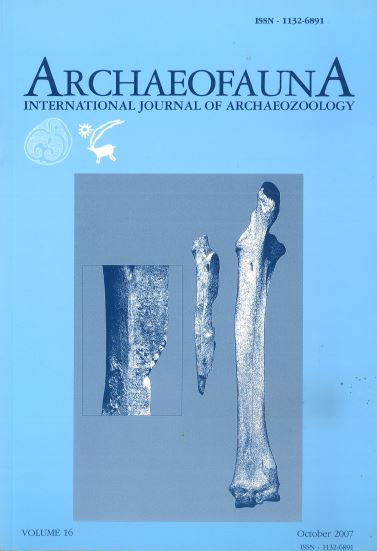Keywords:
Dromedary, Bone anvil, Al-Andalus, BlacksmithsAbstract
A review of the archaeological and ethnographical literature has shown that bone anvils were not only manufactured in different geographical regions, extending from Ukraine to the Iberian Peninsula and northern Africa but also that they have been in use from the Hellenistic period until today. Although cattle and equid metapodials appear to be the preferred bones, other parts of the skeleton such as mandibles, humeri, radii, pelves, femora and tibiae were employed too. Here we present a bone anvil fashioned from a dromedary (Camelus dromedarius) right radius-ulna recovered from an urban excavation in the city of Seville (Spain), dated to the Taifa-Almoravid Moslem period (11th-12th-centuries). Besides it being the first archaeological bone anvil of this animal species it constitutes a new record to add to the scarce number of camelid remains in the Iberian Peninsula. Detailed observation of its worked surface and ethnographic information allow us to understand how the medieval blacksmith used this anvil.

